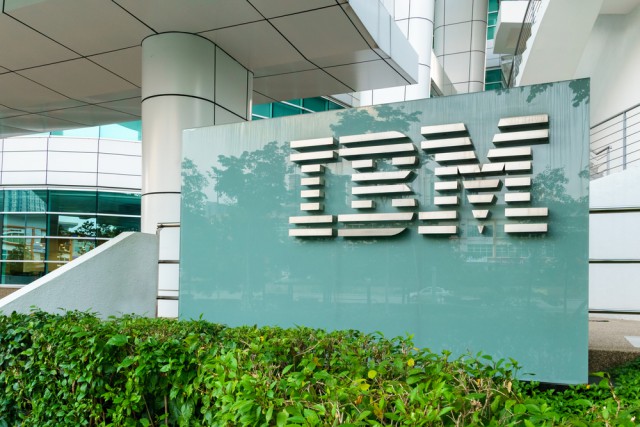
IT support still not getting to grips with hybrid working
In spite of two years of radical change brought about by COVID-19, most IT service management (ITSM) organizations still haven't redesigned their employee support for a hybrid world.
A new study from AI service management company Espressive finds that even though there are new support tools available most enterprises haven't updated their model for employee self-help, forcing remote employees to phone and email the help desk in record numbers.

New AI platform helps financial enterprises handle unstructured data
Unstructured data might include everything from documents to social media posts, all enterprises have it but being able to make use of it is a challenge.
AI startup nRoad is launching its new Convus platform, aimed at financial services businesses enabling them to extract critical business information buried in unstructured documents.

New Hitachi solutions aim to streamline business cloud management
Cloud strategy can make or break an organization's ability to provide timely access to data in order to deliver actionable insights.
Digital infrastructure, data management and analytics company Hitachi Vantara is launching a range of new hybrid cloud products and services that aim to deliver agility, scalability, and flexibility for both private and hybrid clouds.

Ransomware impacts 80 percent of enterprises
A new survey reveals that 80 percent of companies have experienced a ransomware attack, despite spending an average of $6 million annually on ransomware mitigation.
The study, from cyber advisory and solutions firm CBI, based on research by the Ponemon Institute and co-sponsored by Check Point, finds Companies are spending $170,000 per ransomware incident on staffing alone, with an average of 14 staff members each spending 190 hours on containment and remediation activities.

Enterprise tech leaders want a one-stop solution to manage all their platforms and clouds
The old days of having systems in-house where they were easy to control are long gone. Businesses today are increasingly reliant on a range of cloud, SaaS and other solutions that can be a challenge to manage.
A new report from CloudBolt Software shows that 88 percent of over 500 senior tech people surveyed say they want a 'manager of managers' -- an overarching solution to bridge the siloes, unify the overall multi-cloud/multi-tool strategy, and actively govern everything from a single location.

How long does it take to become a CTO?
Chief Technology Officer. Sounds good doesn't it? But it must take years slogging away at the IT coal face to reach such an exalted position, right?
Wrong actually. New research from European software development company STX Next shows that 20 percent of CTOs reached their position in fewer than five years.

How to address the security risks of cloud migration [Q&A]
Cloud is an enabler of productivity and provides the infrastructure which supports modern distributed workforces. But it also poses a serious security risk to businesses that are unprepared to cope with modern threats. Figures from 451 Research show that 40 percent of organizations have experienced a cloud-based data breach in the past 12 months.
Organizations are spending millions on firewalls, endpoint protection and other security measures. What these organizations are missing, however, is visibility and control of security policies that govern 'what can talk to what' and 'who can talk to who' across the entire organizational infrastructure, including on-premise, cloud-native, and hybrid cloud. This creates security blind spots and misconfigurations.

Security concerns are the biggest barrier to cloud adoption
Cloud take up is showing no signs of slowing down, with 97 percent of IT leaders in a new survey saying that their strategy includes the expansion of cloud deployments, however, 63 percent say that cyberthreats are the main obstacle to their cloud plans.
The study, from cloud security company Confluera, looks at how IT leaders detect, evaluate, and act against cybersecurity threats in today's cloud environment.

Google's Linux-based Chrome OS Flex is a huge threat to Windows 11, and Microsoft should be extremely worried
Windows 11 is a really good operating system, but it is overkill for many home and education users these days. Not to mention, it can be risky to use since there is so much malware designed for it. Even for business, many companies are exclusively using web-based solutions in the browser, making Windows unnecessary for them. And so, Chromebooks are becoming more and more popular. They are affordable, easy to use, and extremely secure.
If a company wants to switch to Chromebooks from Windows laptops, however, there is a big dilemma -- what should be done with existing computers? After all, Chrome OS cannot be installed on computers that didn't ship with Chrome OS, right? Well, actually, this is changing...

IBM helps enterprises move mainframe apps to the cloud
Many large enterprises have legacy systems running on IBM Z-series mainframe platforms. In order to help digital transformation efforts and modernize apps across hybrid environments, Big Blue is announcing a series of new capabilities.
Plans include delivering IBM Z as-a-service on IBM Cloud for development and test, as well as introducing additional tools for developing hybrid applications.

Controlling the costs of cloud deployment [Q&A]
Enterprises often turn to the cloud as a way of reducing their IT costs. But using the cloud by itself doesn't necessarily lead to savings, especially if there are no adequate controls in place.
We talked to Lenley Hensarling, chief strategy officer at real-time data platform Aerospike, to discover how the right management strategies can help rein in costs for public, private, hybrid, and multi-cloud deployments.

Modern mentorships: Fixing the cybersecurity skills gap
With job vacancies currently outweighing the number of people available to fill them, a career in cybersecurity offers almost limitless opportunities. The 2021 Cybersecurity Workforce Study from (ISC)² estimated that there were 4.19 million cybersecurity professionals worldwide -- an increase of more than 700,000 from the year before.
While this illustrates an industry undergoing major growth, there remains a workforce gap of 2.72 million people which represents a very serious problem for organizations faced with a growing volume and sophistication of security threats.

The challenge of managing and securing IoT devices in the enterprise [Q&A]
Internet of Things devices are making their way into more and more areas of our lives. But while they offer many benefits they also present businesses with a problem when it comes to managing and securing them.
An ever widening range of devices now have connectivity that may be off the radar of company IT and cybersecurity teams. We spoke to Roy Dagan, CEO of SecuriThings, to discuss the issue and how enterprises can tackle it.

Employees are working fewer hours and are more productive but still risk burnout
Employees now work fewer hours per day with greater efficiency, yielding a 40 percent jump in productivity, according to a new digital workplace report from ActivTrak Productivity Lab.
However, the findings also show that 34 percent of employees continue to be 'overutilized' at work, spending more than 75 percent of their time in this state. Only 62 percent of employees maintain a healthy balance of productivity to work hours, falling significantly short of the 80 percent goal the Productivity Lab recommends.

Businesses have a one-in-three chance of losing IP when an employee quits
There is 37 percent chance of a company losing IP when an employee quits, according to a new report from insider risk management company Code42.
Hot on the heels of yesterday's report about malicious insiders, the study, carried out by Vanson Bourne, finds that cybersecurity teams are facing unprecedented challenges when it comes to protecting sensitive corporate data from exposure, leak and theft.
